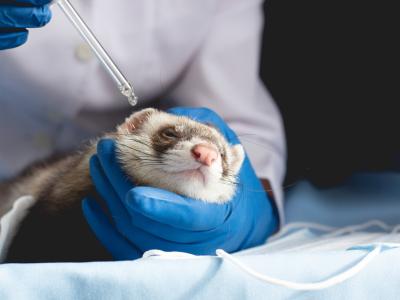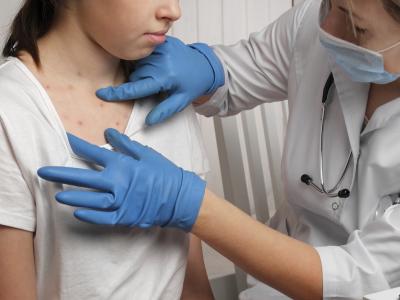Study: Adjuvant needed for adequate H7N9 vaccine response
Two doses of H7N9 avian flu vaccine produced what is considered an adequate immune response in only 2% of adults vaccinated, but two different adjuvants boosted that rate to 57% and 84%, according to a study yesterday in the Journal of the American Medical Association (JAMA).
In a phase 2 trial, US scientists randomly assigned 980 adults 19 through 64 years old to receive the H7N9 vaccine and a booster dose 3 weeks later at doses of 3.75, 7.5, and 15 micrograms (mcg) of hemagglutinin with or without adjuvants, or a 45-mcg dose without adjuvant. The study was conducted at five US sites from September through November 2013.
The two adjuvants, which are substances that boost the body's immune response, were AS03, made by GSK, and Novartis's MF59.
After two 15-mcg vaccine doses, only 2% in the no-adjuvant group had a hemagglutination inhibition antibody (HIA) titer of 40 or higher, compared with 84% with AS03 and 57% with MF59 (with 92 to 96 volunteers in each group). Some groups received alternating doses of AS03- and MF59-adjuvanted vaccine, and their immune response fell in between the AS03-only and MF59-only response, as measured by geometric mean titers.
Just 9% of those who received two non-adjuvanted 45-mcg doses had an HIA titer of 40 or higher. The authors also found that one dose of the H7N9 vaccine—adjuvanted or not—does not produce a strong immune response.
"These results imply that, of the options currently available utilizing adjuvants included in the national stockpile, based on the immune response data, AS03 should be considered a first-line adjuvant for strategies incorporating an inactivated H7N9 vaccine in adults," the authors wrote.
Human cases of H7N9 avian flu first appeared in China in early 2013, and since then almost 700 cases have been confirmed, almost all in China.
Jul 21 JAMA study
Jul 21 JAMA press release
Flu vaccine 'cocktail' found broadly protective in mice
An intranasal influenza vaccine that includes 4 of the 16 types of hemagglutinin protein found in flu viruses was found to protect mice against a broad range of the viruses, including several that were not specifically targeted by the vaccine, according to a report yesterday in mBio.
Researchers with the National Institute of Allergy and Infectious Diseases (NIAID) tested the vaccine as part of the effort to develop a vaccine that could protect against all influenza A viruses. The vaccine contains non-infectious virus-like particles (VLPs), a technology used in licensed hepatitis B and human papillomavirus vaccines, according to an NIAID press release.
The vaccine includes two human hemagglutinin subtypes that are contained in seasonal flu vaccines, H1 and H3, and two avian subtypes, H5 and H7. After giving mice the VLP vaccine, the researchers exposed them to a "wide variety" of flu viruses, according to the report.
They found that mice were significantly protected against viruses containing the 1918 pandemic H1, 1957 H2, and avian H5, H6, H7, H10, and H11 hemagglutinin subtypes, the report says. The aggregate survival rate for all the mice was 94%.
"For example, 30 out of 30 vaccinated mice exposed to the human 1957 H2 virus or avian H10 or H11 viruses survived, and 20 out of 24 vaccinated mice exposed to H6 virus survived and experienced less weight loss than unvaccinated mice, all of which died when exposed to virus," the press release states. "Vaccinated mice also showed significant protection against avian H5N1 and H7N9 viruses, two virus strains that have caused many human cases and deaths in recent years."
"These experiments suggest a promising and practical strategy for developing a broadly protective 'universal' influenza vaccine," the authors wrote. They are now testing the vaccine in ferrets. If the results are favorable, they will move on to initial human trials.
Jul 21 mBio abstract
Jul 21 NIAID press release
China, Ghana report more H5N1 bird deaths
For the second time in 3 days, China has reported H5N1 avian flu deaths in wild birds—this time in Tibet and Inner Mongolia—while Ghana has confirmed two new H5N1 outbreaks, according to separate reports to the World Organization for Animal Health (OIE).
China's Animal Disease Control Centre reported that 415 bar-headed geese and brown-headed gulls in Tibet and 300 black-necked grebes in Inner Mongolia died from H5N1 infections back in May, according to an OIE report posted today. Samples from both outbreaks tested positive for the virus at the Harbin Veterinary Research Institute on May 29. The reason for the delay in reporting was unclear.
Both outbreaks began on May 11. The one in Tibet involved birds on Galongcuo Bird Island, and the one in Inner Mongolia occurred in the Shuangheer Wetland Nature Reserve.
Jul 22 OIE report on China
In Ghana, two H5N1 outbreaks in Greater Accra have affected 5,187 birds, the country's Ministry of Food and Agriculture noted in an OIE report yesterday.
The lion's share of disease occurred on a farm housing 5,176 chickens, ducks, quail, partridges, pigeons, geese, and guinea fowl. The outbreak, which began on Jul 1, killed 2,447 birds, and the rest were culled to prevent disease spread.
The other outbreak began on Jul 7 and affected a village flock of 11 free-ranging roosters on a cassava farm, killing 3, with the rest euthanized. Ghana has now reported 14 H5N1 outbreaks since Jun 1, most in Greater Accra, which lies in the southeast.
Jul 21 OIE report on Ghana









